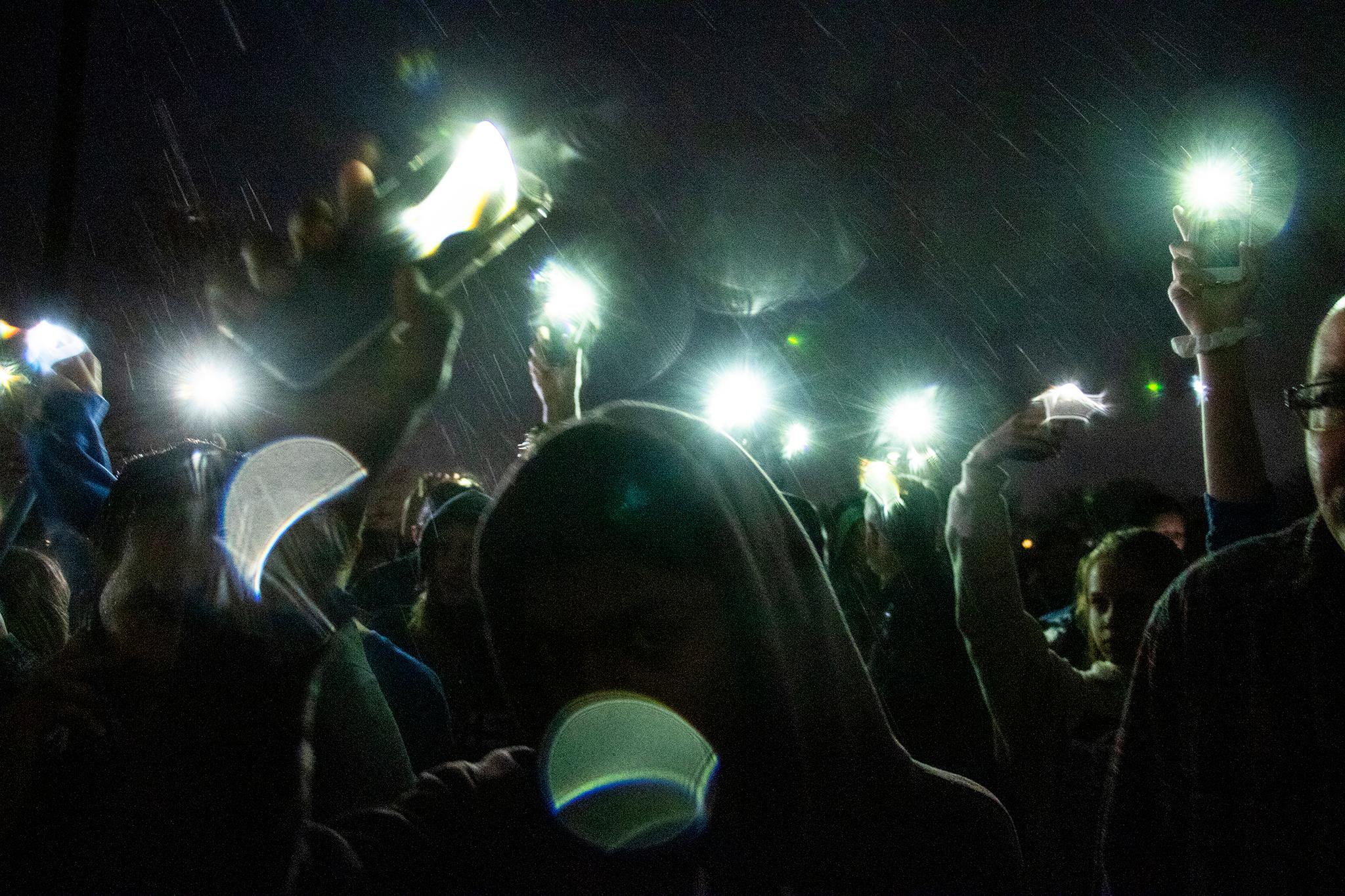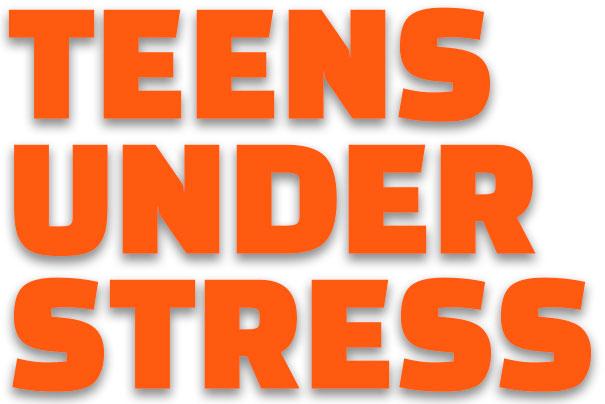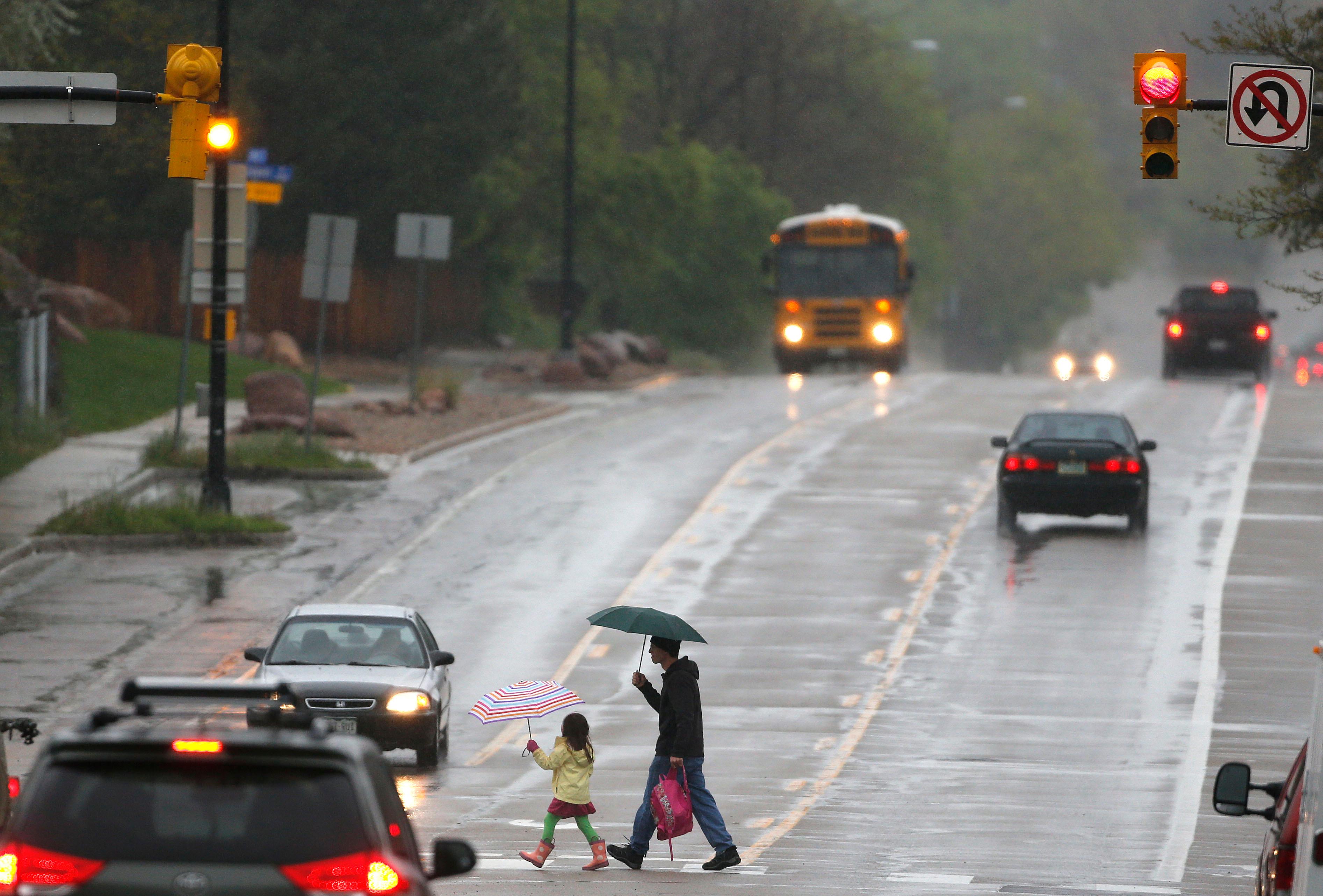
This is the first installment in CPR's series Teens Under Stress, a months-long examination of the pressures adolescents are under and what can be done about it.
On a chilly May night last spring, hundreds of teens crammed into the entrance of Highlands Ranch High School. The kids, sad and angry, were there for a memorial for a teen killed in a school shooting less than a week prior. And in an instant, all their emotions about that night, about what their lives are like, about the help they’re not getting, came out in a chant:
“Mental health!” they cried. “Mental health! Mental health!”
It was chilling. It was deep anguish. This group of teens demanded attention be paid to their frustrations. Their stories about what school’s like, the pressure they’re under, how they see the world – poured out. One girl at the event described what her depression feels like:
“It's an illness. It's like little puppeteers and it pulls strings and eventually when no one talks to you anymore, when no one wants to be your friend, when no one wants to see you, when you're starting to fall in grades, when you feel like you're disappointing everyone, those strings, like they sort of appear everywhere and then it just slowly takes over and then you can't see anything anymore. It's like you're looking through a really narrow tube.”
And here more than elsewhere in the country, the number of teens struggling is going up. Over the past three years, Colorado has seen the highest increase in teen suicides in the nation – jumping 58 percent, more than twice what the nation saw. About a third of Colorado youth report feeling sad or hopeless, according to a survey of more than 50,000 middle and high school students. One in six young people have seriously considered suicide, with almost half of gay, lesbian and bisexual youth considering suicide. In short, thousands of Colorado teens are dealing with mental health issues and the effects on their lives.
If you need help, dial 988 to reach the Suicide and Crisis Lifeline. You can also reach the Colorado Crisis Services hotline at 1-844-493-8255 or text “TALK” to 38255 to speak with a trained counselor or professional. Counselors are also available at walk-in locations or online to chat.
Teens themselves tell us that a complex mix of factors are adding up to a crisis.
In reporting these stories we spoke with dozens of teens. They named some of the things that contribute to anxiety and depression, including emotional isolation, a definition of success that means getting into the right four-year college, social pressure to look a certain way (always, because Snapchat never sleeps), trauma at home or school, and the political climate. They worry about climate change, school shootings and figuring out who they’re supposed to be.
We heard from 15-year-old Dane, who can’t believe the world adults are handing over.
“We just think that everything around us is ridiculous and easily preventable, but we're kind of letting the world fall to ruin,” Dane said. “We realized that as kids, there's nothing we can do to change really any given situation. So a lot of us have just given up hope.”
We talked to 17-year-old Caden, who feels like they’ve been told there’s only one acceptable path.
“Parents just drill it in our heads when we're kids,” Caden said. “It’s like, ‘Oh, gotta save for college.’ Like when you’re in elementary school, ‘Gotta start saving for college.”
And we talked to Amelia, a self-described “selfie addict.”
“I will actually take pictures so I can post them on my snap chat and people can swipe up and then I can feel better about myself.”
These things are connected, and they play off of each other in ways we’re only hearing by talking to teens. Feeling anxious about school or something happening at home? Open up Facebook to chill out. Post something. Feel anxious about that and shut it down.

The good news is that anxiety and depression are treatable.
Teens are channeling their passion and their pain into a number of issues including climate change, gun control and mental health. There are things schools, families, and teens themselves are doing to alleviate the pressure. We’ll explore those in-depth over the course of the series.
We’ll also hear that there are ways they’re learning about their own sources of strength:
Santiago, a 17-year-old who would like to set up a space at his high school where kids can talk openly about their problems with other kids, said that, “Rather than allowing and just kind of watching from the sidelines and watching people slowly deteriorate, I want to be that person who steps in and says, 'I’m here.'”
“It’s amazing to me,” 18-year-old Alex Bush told us. She struggled with depression after several friends and her father died by suicide. “I’ll look back at journal entries from a year ago and I can’t even recognize the person who was writing that. I was in such a dark place.”
CPR News has spent weeks checking in with teens and people who spend all day with teens, asking about how teenagers are feeling, what’s stressing them out or making them feel sad and how they’re coping.
Some of it seems familiar to anyone who was ever a teen — and science is still studying that stuff.
Adolescent development is a time already characterized by sharp mood swings, heightened sensitivity, drama, raging hormones and sometimes defiant or risky behavior. Mood disorders tend to surface in the teen years.
Lack of connection to an adult (or an adult who will just listen to them) was one of top risk factors cited in the Colorado Attorney General’s report on youth suicide, and one cited by numerous Colorado school counselors and school psychologists.
The University of Colorado Boulder’s Roselinde Kaiser said plenty of us get through adolescence and come out the other side as emotionally sturdy adults. But for others, it's a time when the stressors are too overwhelming, or young people have never learned coping skills.
An important question her lab is studying is, what kind of stress is likely to derail somebody?
“Is it a particular kind of very severe or traumatic stress or is it the accumulation of many stressors that come together at the same time? Is it chronic stress, the kind of stress that tends to persist? The answer seems to be it’s maybe all of those things,” she said. “Any sort of combination of stressors that we feel are out of our control, are unpredictable or we don't have good coping strategies to circumvent – those are the stressors that are most likely to have negative health effect.”
But the number and intensity of pressures has amplified.
Many experts say many problems come down to the way we’re living, what happens at school, the way kids are spending their time, changes in parenting, and the enormous expectations placed on teens in a hyper-competitive culture. All that can be destructive. For some teens, that’s layered on top of other stressors relating to poverty, harassment and bullying or immigration status.
Green Mountain High School counselor Laura Oliver says the issue is huge and complex.
“Is it text anxiety, is it social anxiety, is it generational anxiety?”
She and other counselors say it’s the layering of multiple stressors on top of one another that has put some teens at the breaking point, so much so that “they use the vocabulary of anxiety and depression in the way that nobody was using 10, 15 years ago,” said Diana Rarich, a social emotional learning specialist at Chatfield High School.

The issues seem to start early, before children even become teens. Counselor Karie Phillips says elementary school teachers are seeing more than ever before delays in speech, motor, language skills and delays in how kids process and organize all their senses. “They don't have what they used to have at the same age across the board, including self-regulation, self-management skills and this explosion of anxiety and depression all the way down to kindergarten,” she said.
It’s important to note that many teens are doing just fine, able to manage the constant and multiple stressors they encounter on a daily basis. But increasing numbers are struggling.
“Some kids... that means putting their head down on the desk every day and when you check in with them, they say ‘I'm just not doing it, I'm not doing anything,’” said high school English teacher John Dickson. “And some kids, they retreat into their phone. They're just on the phone the whole time. Some kids, you know, they'll erupt and act out in an outburst. Some will break down crying and come talk to me privately.”
We want to know more, and we hope you do, too.
CPR News will spend the next few months investigating the factors that have created the ultimate pressure cooker for some teens. We’ll go into their world through audio diaries, interviews, reflection and analysis. Most importantly, we’ll examine what teens, families and schools can do to let some of the pressure loose.
_
Editor's Note: An earlier version of this story misspelled Roselinde Kaiser's name.










